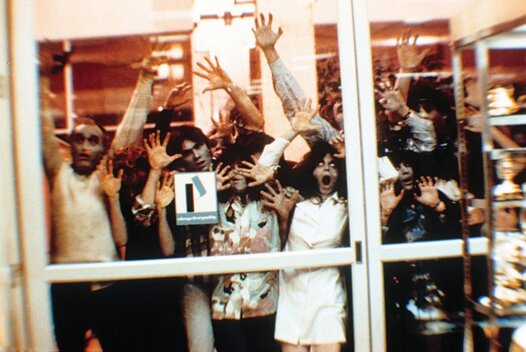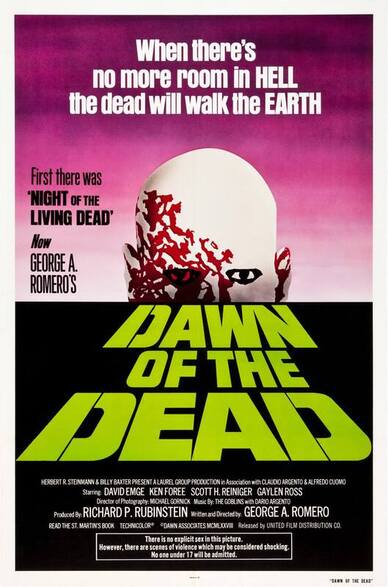Written by John Edward Betancourt ‘When there’s no room in hell, the dead will walk the earth.’  The end of the world. A concept that has captivated mankind for generations and understandably so. For we are the only species on the planet, that can comprehend the cause and effect of an Extinction Level Event, and being cognizant of the fact that our lives could potentially end on a moment’s notice if the cosmos decided for that to happen, combined with our proclivity to ponder upon dark thoughts; has allowed for this notion to infect in our minds in every way imaginable. Which is why time and time again, we see stories hit the market that dive deep into the end and explore what life might look like leading up to the fall of civilization, and what the future of mankind might look like for those who survive the apocalypse. But therein likes quite the storytelling trap. For while creative minds are quick to explore the tension that exists as the clock to our end counts down to zero, and what it would take to rebuild civilization, few storytellers out there are willing to dive into the exact moments that bring humanity to its knees and that makes sense as well. Because one would truly have to ponder upon what would allow for us to end, and deep down, all of us know that the actual finale of humankind would be unpleasant to say the least. For in those final moments, some would let loose in ugly fashion and indulge in their darker sides without the constraints of society surrounding them. Whilst so many more would find themselves filled with fear and sorrow over the terrifying reality that end has arrived and well, there’s simply no way that such images and ideas could make for a powerful and meaningful story… right? Well, as it turns out, George A. Romero was able to teach us, that’s simply not the case. For if an apocalyptic story is done right and finds a way to explore the human condition at the end in a compelling manner, then something special can come to fruition and for proof, look no further than his next motion picture. For Dawn of the Dead is nothing short of an apocalyptic masterpiece. One that not only chronicles the end of mankind at the cold and rotten hands of the living dead, but one that also explores what could save us from a horrific fate in the most fascinating way imaginable and well, what allows for such an incredible storytelling feat to happen, is how Romero explores, in great detail; the elements that would bring down our modern world. Something that he accomplishes by immediately plunging us into quite the follow-up crisis. For when we catch up with America here, some three weeks after the events of Night of the Living Dead, the situation is quite grim. For the roving bands of heroes at the end of NOTLD have done little to stop the spread of living death, in fact, it’s now everywhere in the nation and its growing around the world, putting the planet in quite the crisis, one where humanity seems quite confused at what to do next. Which is where Romero’s grand exploration on what brings us to our knees gets underway. Because it quickly becomes clear by way of the violent battle at Project 107 that humanity’s biggest problem in battling these monsters, is its respect for death as a whole. Because few are able to comprehend that the nature of our life cycle has changed irrecoverably and that the old ways of paying our respects and treating our dead with great care has become dangerous. For now, they are nothing but reanimated eating machines, without an ounce of humanity and really, apathy and an inability to change, are what truly bring about the end of the world.  For this particular enemy only demonstrates rudimentary intelligence at this point in time, and they are slower than us, and for a time, there are more of us than them. Which means that an organized response, the kind that Doctor Foster eludes to on Mister Berman’s show in the opening moments of this tale, would have solved the problem. Because a united humanity could have rounded up the dead and dealt with them swiftly and enacting new measures for the future would have prevented widespread resurrection. But instead, fear and horror over seeing loved ones return and holding steadfast to tradition allowed for them to spread in an unrestrained manner and there is something quite sobering about seeing that kind of realistic and timely response play out over the course of the film and it adds a genuine sense of dread to an already chilling story. But the wonder of this film and its exploration of how we simply cannot let go of the past doesn’t end with the collapse of mankind. For our intrepid heroes handle the rest of said exploration by way of their decision to secure the mall they discover. Which seems like a fairly innocuous decision at first glance since it does have all the amenities that one would need during a major crisis, since it is filled to the brim with food and water and shelter and every creature comfort that one could ask for. But it doesn’t take long for the audience to also realize that outside of the food, nothing in that mall matters, and that our main characters are also desperately trying to hang onto the old ways and making an active choice to do so despite having the means to go wherever they want. And the bleak nature of that realization is hammered home by how Flyboy and Peter are willing to fight to the death to protect meaningless stuff, instead of taking this opportunity and the hint to flee and start over properly. Yet while every single plot element we’ve discussed is incredibly thoughtful and worthy of analysis, we would be remiss to not point out the sheer brutality of this film as well. Because part of what makes this film so horrifying and so unsettling, is that it holds nothing back in its presentation of what the dead want from humanity. Because the gore here is simply next level and Tom Savini’s masterful special effects still leave one nauseous and squirming in their seat after all these years because every gooey, flesh-eating moment is still horribly convincing and detailed and really, the gore, and the terror and the sheer intelligence of this motion picture, are what allow for it to withstand the test of time and be regarded as a true masterpiece through and through. Because what George Romero assembled here was revolutionary in every sense of the word. If anything, it is no wonder that this particular film put George on the map as a master filmmaker and pioneer in the industry. For in essence he assembled a perfect horror film. One that outright offers something for every horror fan out there. Because those who don’t want to think when they watch a scary movie, can focus on the chills and spills that come with the gore, and those who want more depth, have messages to latch onto. But the perfection aspect goes beyond appeasement of the core audience, because the pacing of this film, the haunting cinematography and the quality acting all lend to its gravity and the fear it outright exudes and thankfully for fans everywhere, this wouldn’t be the last time that Romero would let loose when it comes to the living dead and what they can accomplish within the framework of a story. But he would take a little time to do a few more personal and intimate stories before revisiting their rotten world.
0 Comments
Leave a Reply. |
Archives
April 2025
|
|
© 2012-2025, Nerds That Geek LLC.
All Rights Reserved. |
uWeb Hosting by FatCow

 RSS Feed
RSS Feed
